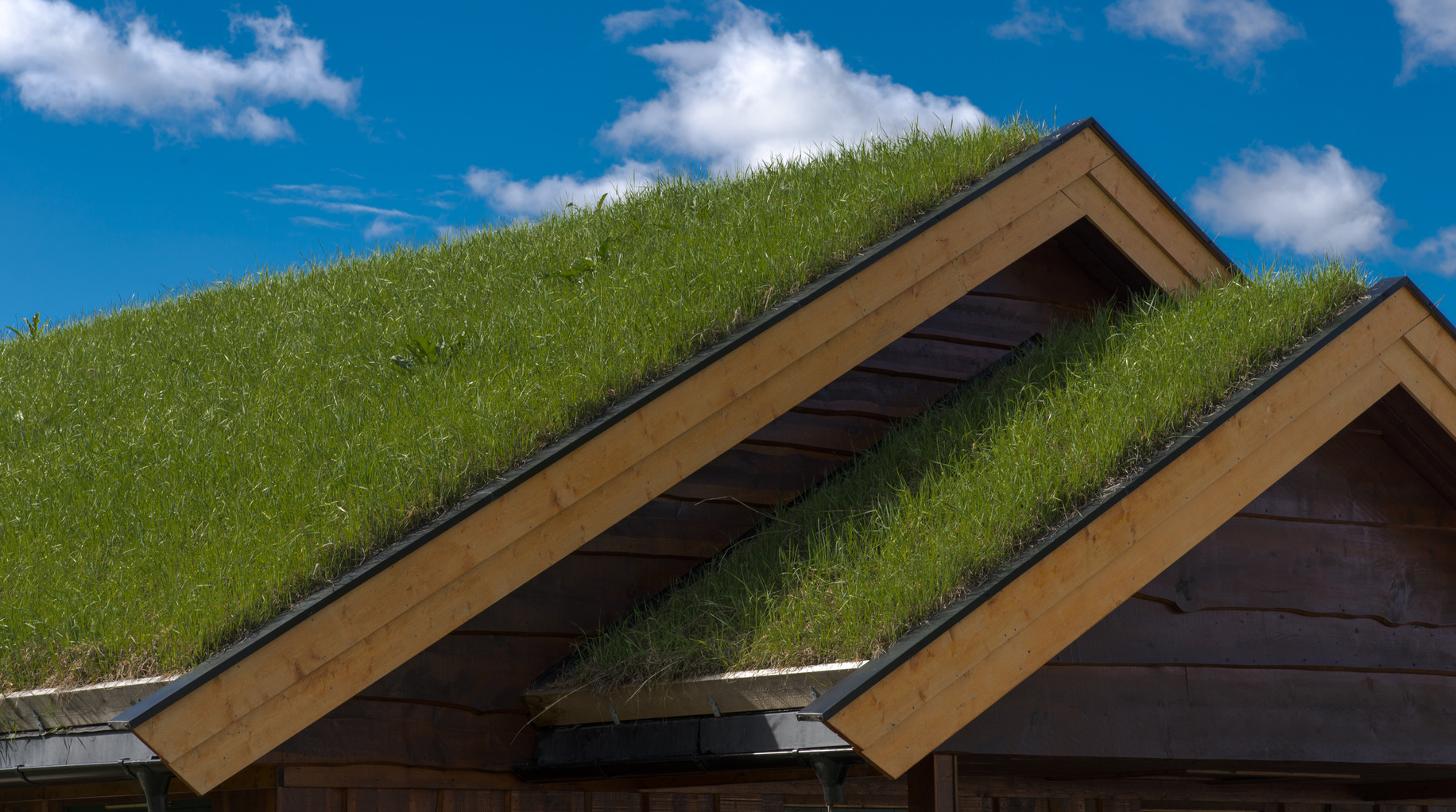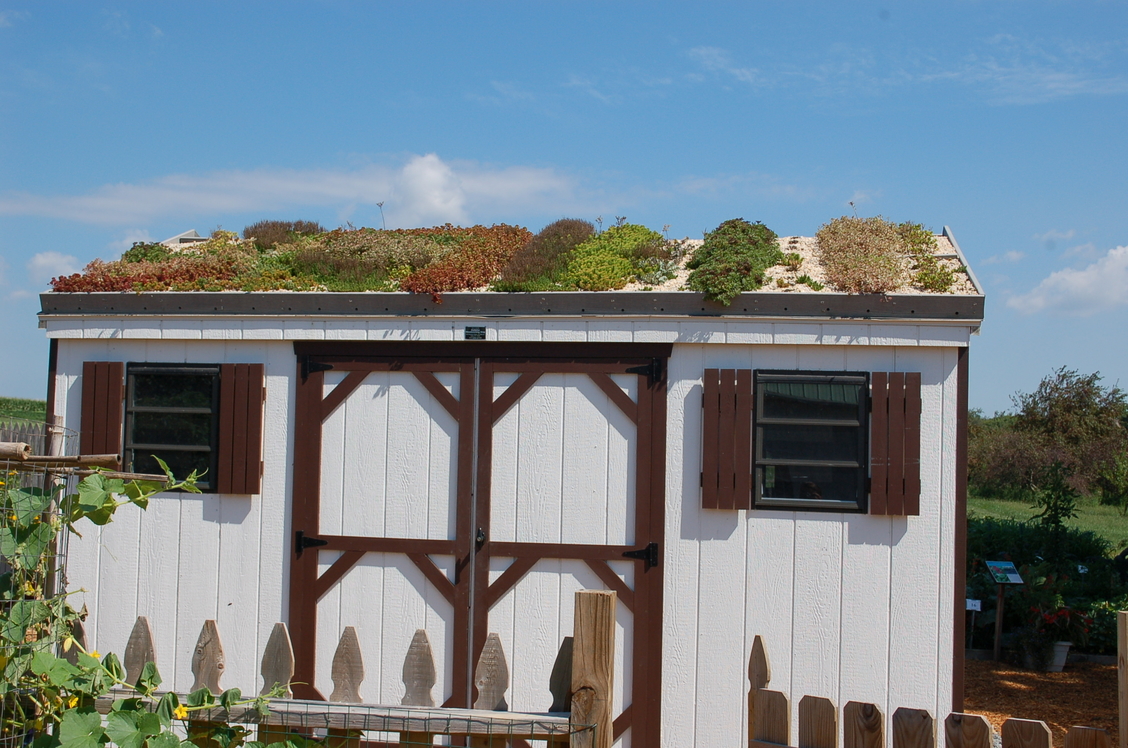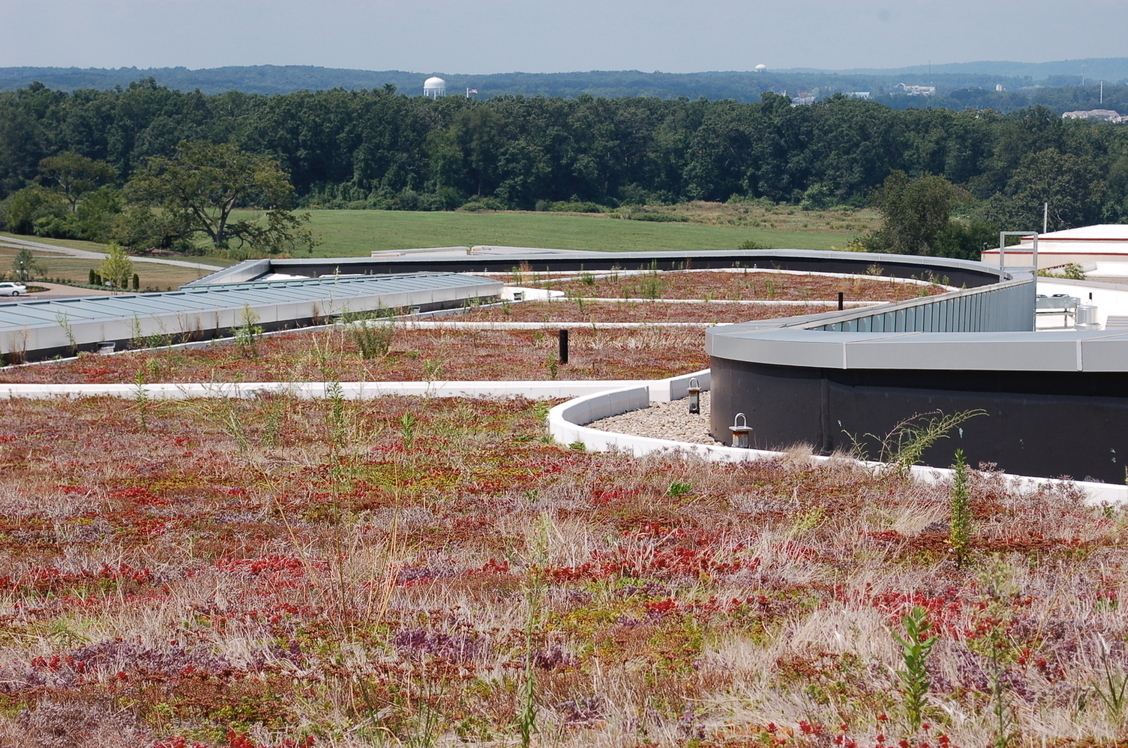
Is a green roof for you? Trading above-head shingles for succulents could make your roof more eco-friendly.
Colorful flowers and lush green grasses are growing in the sky – or, at least it looks that way from the sidewalk. Plants such as sedum, fescue, yarrow and woodland strawberries are replacing asphalt or ho-hum black shingles, transforming the rooftops of homes, highrises and office buildings into canvases for environmentally friendly development.
While rooftop vegetation was used for waterproofing and insulation for centuries (and to address the lack of timber building materials), it fell out of favor when new materials such as roofing tiles, tar and shingles were introduced — but that is changing. Rooftop gardens have returned to the landscape, according to Robert Berghage, Ph.D., director of the Center for Green Roof Research at Pennsylvania State University.
Green roofs are gaining popularity “on public buildings, new large commercial structures and high-density housing where they can have a major impact,” Berghage says.
Benefits of Green Roofs
According to the U.S. General Services Administration, green roofs have many benefits. They can:
- Cool off the roof surface by up to 40%.
- Reduce stormwater runoff rate from a roof by up to 65%.
- Cut the heat transfer from the roof to the building by up to 72%, reducing the need for air conditioning.
- Attract such wildlife as birds, bees and spiders.
Green roofs can be more durable than conventional roofs, too, lasting up to 40 years.
Replacing Shingles With Sod
Installing a green roof, also known as a “living roof” or “eco roof,” might be as simple as getting the go-ahead from a structural engineer that the roof can hold the extra weight and having a landscape architect create a design. Some green roof industry contractors specialize in green roof design and installation; DIY options are also available. The latter involves unrolling pre-planted strips that can be rolled onto the roof on top of a polyethylene root barrier that prevents the plants from encroaching onto roofing materials and a composite drainage mat that directs water to roof drains.
On large buildings, green roofs can be elaborate gardens complete with trees and shrubs.
As a general rule, a standard 4-inch green roof will weigh about 30 pounds per square foot, according to Berghage. The total weight (and whether your roof can support it) is a major consideration; the slope of the roof is important, too.
When adding a green roof to an existing structure, the load-bearing capacity of the roof is critical. When green roofs are included in new construction, the weight can be anticipated and designed for. “Most residential structures are quite limited in terms of their load-bearing capacity of the roof so a thin green roof with sedums or other similar drought tolerant species is all that is usually possible,” Berghage says.
Green Roof System Components
There are many types of green roofs, and manufacturers’ systems vary. But in general, a green roof will have the following layers (ordered from top to bottom):
- The plants themselves. Grass and flowers are often used, but sedum, is the most-common choice, due to its low maintenance needs.
- A growing medium. A 4-inch layer will do for simple installations; more exotic and commercial structures have a layer of up to 1 foot.
- A filter/drainage layer. The drainage system needs to balance the need of the plants against the need for stormwater management.
- A protective/waterproof layer.
- A deck on which the grass roof lies.
A more extensive green roof will tend to have even more layers. It is easiest to install vegetation on roof with a minimal slope; a steeper pitch can be a canvas for a green roof but the greater the pitch, the higher the cost and the more elaborate engineering.
Check to ensure that local building codes allow green roofs and secure any required permits before beginning construction. Although a little extra work is required on a green roof project, the return on investment can be significant.
Costs vary, depending on whether it is a semi-intensive or intensive green roof, the number of square feet and what types of membranes, drainage system and plants are used. The United States Environmental Protection Agency estimates that costs range from $10-$25 per square foot.
Planting for the Planet
Green roofs are not just beautiful; rooftop vegetation offers major environmental benefits.
The combination of plants and absorbent growing medium help increase air quality, reduce stormwater runoff and cut greenhouse gases. A 2018 study found that green roofs retained up to 32.9 percent of the volume of precipitation that fell in Portland, Ore. Choosing the right plant materials can also improve water retention. Research found that plants like basket grass and nodding blue lilies excelled at retaining stormwater and reducing runoff, both of which improve water quality.
Green roofs also combat the “urban heat island effect” caused by human activity in urban areas.
A green roof could also help lower your energy bills. The EPA estimates that the temperature on an energy efficient green roof can be 30 degrees to 40 degrees Fahrenheit lower than conventional roofs and reduce energy use up to 23 cents per square foot of roof surface.
Covering shingles with plant material also protects the roof from the sun, boosting its lifespan. Berghage estimates that roofing material will last up to three times longer than an uncovered roof.
Thanks to its shallow roots and ability to store water, sedum is the most widely used species on living roofs; native grasses are also popular. For maximum benefit, choose native plants that are adapted to local conditions and need little irrigation, fertilizers or pesticides to thrive; native plants will also be more suited to drought and heat. Instead of planting a monoculture in the sky, choose multiple species of plants for your green roof to create a biodiverse habitat for pollinators and other wildlife.
Concept to Completion


The cost of a green roof depends on its size, roof pitch and plant materials but starts around $15 per square foot, according to green roof installers Green Roof Technology. Incentives such as grants and tax breaks that promote energy efficiency might be available through environmental groups, states or municipalities to help offset the costs.
Once a green roof is installed, maintenance is minimal. The roof will need occasional watering (depending on rainfall) and weeding until it gets established. By the third growing season, Berghage says no supplemental watering is needed.
The savings over conventional roofs can be substantial. One U.S. General Services Administration study pegged potential savings at $3.30 per square foot of roof.
If installing a green roof on the roof of your home seems overwhelming, Berghage suggests tackling a smaller project first. You could try a roof garden. Or, if you’re doing a green roof as a DIY project, “I generally suggest starting with a garden shed.”